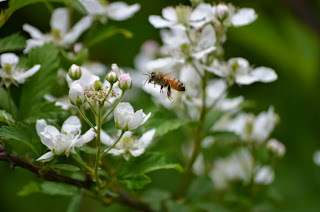With my radish crop becoming ripe, I found myself with more radishes than I could possibly consume on my own. The best way I could think of to extend the life of my produce was to pickle them. Last night I did just that.
I first harvested all the radishes. There were a handful that were still too small, and may never full develop, but the yield from my twelve square feet of garden (after having already picked enough for a snack and a side dish) was well over 100 radishes. And I still have time to replant in that same square footage, if I wanted (and I probably will). Those hundred radishes resulted in 7 jars of pickles, with three of those having carrots mixed in. It would have been six 16 oz. jars of all-radish pickles.
I began by prepping all my radishes, removing the greens and roots. The chickens and goats seemed to enjoy those, so there is no waste! Then I sliced all the radishes to about 1/8" thickness using my mandolin, which made them nice and consistently sized, and saved me a bunch of time, I'm sure. Radishes are so small that it was a little difficult to use the hand guard thing, but I've watched enough food network to know you should never use a mandolin with your bare hands.
For the first recipe, courtesy of gardentherapy.ca, I stayed pretty true to the recipe except I used pickling salt instead of sea salt. I'm hoping the amounts required to get a good brine are pretty consistent between those two.
For the more Asian version, I modified slightly a recipe I found on the Whole Foods website to use ingredients I had on hand. Those jars contain a mixture of 2/3 radishes and 1/3 carrots. I omitted the cucumber, chilies, ginger, and onion - all of which would make them way more delicious but I didn't have the foresight to pick them up at the store. Next time! I also played with the pickling juice a bit and tested three variations:
- Rice vinegar and pickling salt
- Seasoned rice vinegar and pickling salt
- Seasoned rice vinegar and pink Hawaiian salt
They are in the fridge now, since both recipes are considered "quick pickles" and are not meant for long term storage. They should be ready to try by tomorrow! I'll report back with the results. fingers crossed!









































